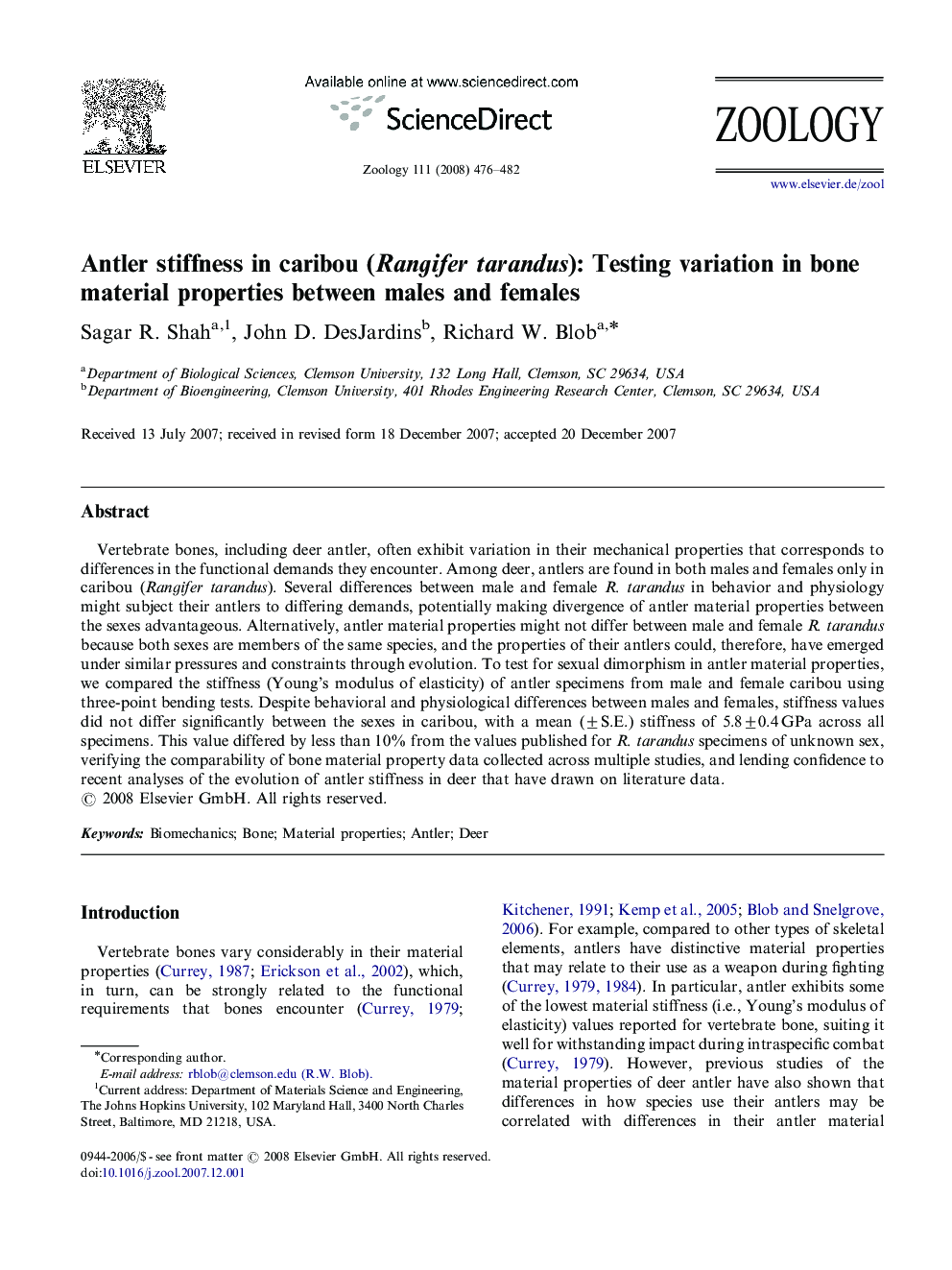| Article ID | Journal | Published Year | Pages | File Type |
|---|---|---|---|---|
| 2791303 | Zoology | 2008 | 7 Pages |
Vertebrate bones, including deer antler, often exhibit variation in their mechanical properties that corresponds to differences in the functional demands they encounter. Among deer, antlers are found in both males and females only in caribou (Rangifer tarandus). Several differences between male and female R. tarandus in behavior and physiology might subject their antlers to differing demands, potentially making divergence of antler material properties between the sexes advantageous. Alternatively, antler material properties might not differ between male and female R. tarandus because both sexes are members of the same species, and the properties of their antlers could, therefore, have emerged under similar pressures and constraints through evolution. To test for sexual dimorphism in antler material properties, we compared the stiffness (Young's modulus of elasticity) of antler specimens from male and female caribou using three-point bending tests. Despite behavioral and physiological differences between males and females, stiffness values did not differ significantly between the sexes in caribou, with a mean (±S.E.) stiffness of 5.8±0.4 GPa across all specimens. This value differed by less than 10% from the values published for R. tarandus specimens of unknown sex, verifying the comparability of bone material property data collected across multiple studies, and lending confidence to recent analyses of the evolution of antler stiffness in deer that have drawn on literature data.
